All content on this site is intended for healthcare professionals only. By acknowledging this message and accessing the information on this website you are confirming that you are a Healthcare Professional. If you are a patient or carer, please visit the Lymphoma Coalition.
The lym Hub website uses a third-party service provided by Google that dynamically translates web content. Translations are machine generated, so may not be an exact or complete translation, and the lym Hub cannot guarantee the accuracy of translated content. The lym and its employees will not be liable for any direct, indirect, or consequential damages (even if foreseeable) resulting from use of the Google Translate feature. For further support with Google Translate, visit Google Translate Help.
The Lymphoma & CLL Hub is an independent medical education platform, sponsored by AbbVie, BeOne Medicines, Johnson & Johnson, Roche and sobi, and supported through educational grants from Bristol Myers Squibb, Incyte and Lilly. View funders.
Now you can support HCPs in making informed decisions for their patients
Your contribution helps us continuously deliver expertly curated content to HCPs worldwide. You will also have the opportunity to make a content suggestion for consideration and receive updates on the impact contributions are making to our content.
Find out more
Create an account and access these new features:
Bookmark content to read later
Select your specific areas of interest
View lymphoma & CLL content recommended for you
EHA-SWG 2017 | Rare Lymphomas: Biology of MYC-driven Lymphoma
On March 10–12 2017, the EHA-SWG meeting on Rare Lymphomas took place in Barcelona, Spain, and was jointly chaired by Prof. Martin Dreyling, from Klinikum der Universität München, Germany, and Prof. Marie-José Kersten, from the Academic Medical Center, Amsterdam, The Netherlands.
On March 11th 2017, Prof. Dr. Med. George Lenz, from Universitätsklinikum Münster, Germany, gave a presentation titled “Biology of MYC-driven lymphomas”.
Prof. Lenz began the talk by explaining the biologic role of MYC:
- MYC regulates approximately 15% of all genes
- MYC dimerizes with MAX to bind specific DNA sequences, termed “E-boxes”
- MYC can activate as well as repress gene expression
- Different genetic alterations can deregulate MYC expression
Burkitt Lymphoma
The talk then focused on Burkitt Lymphoma (BL), of which nearly all cases harbor MYC rearrangements: t(8;14), t(2;8), or t(8;22). Gene expression profiling differentiates BL from molecular DLBCL subtypes and high-throughput sequencing have identified new insights into the biology of BL.
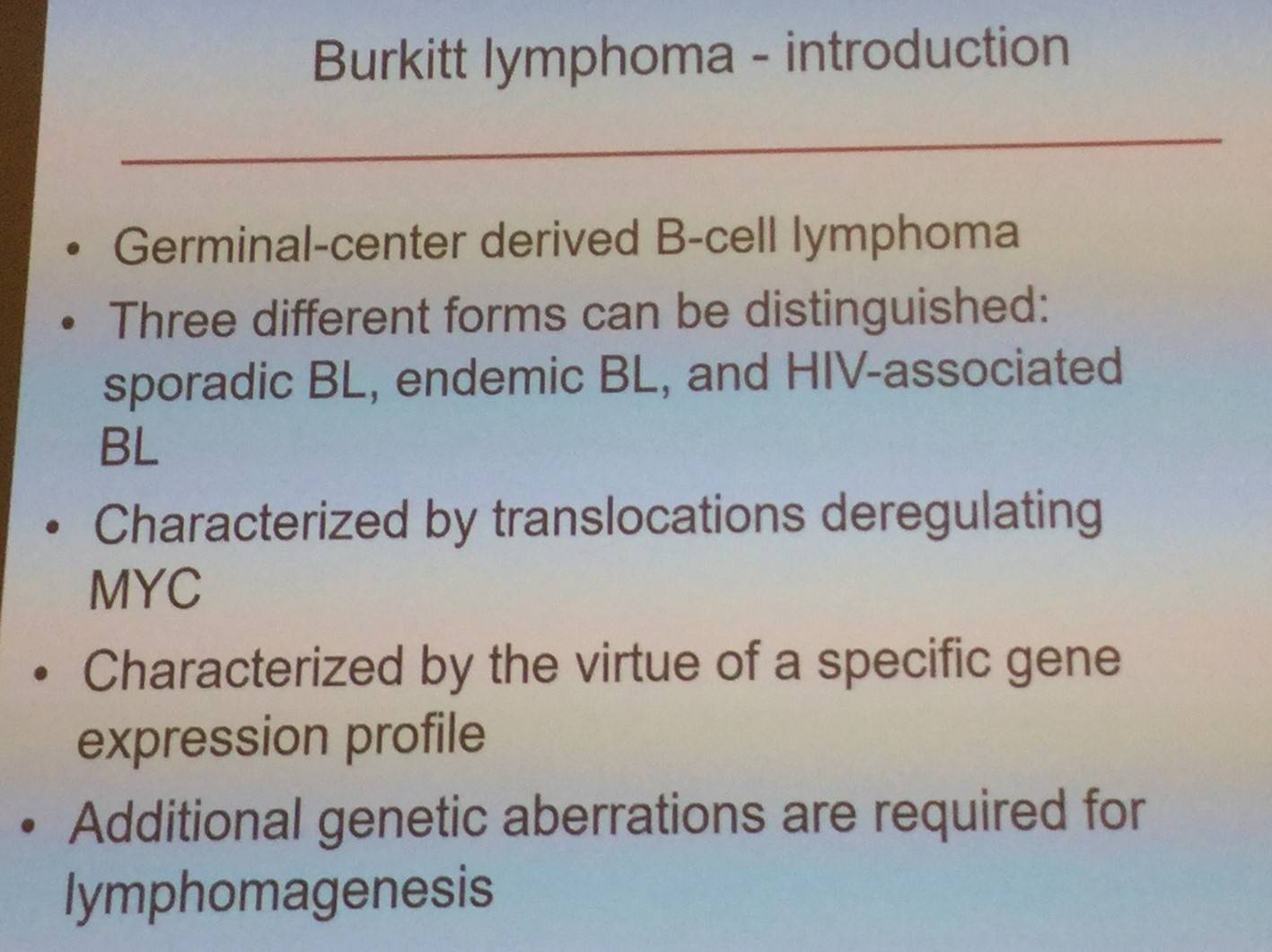
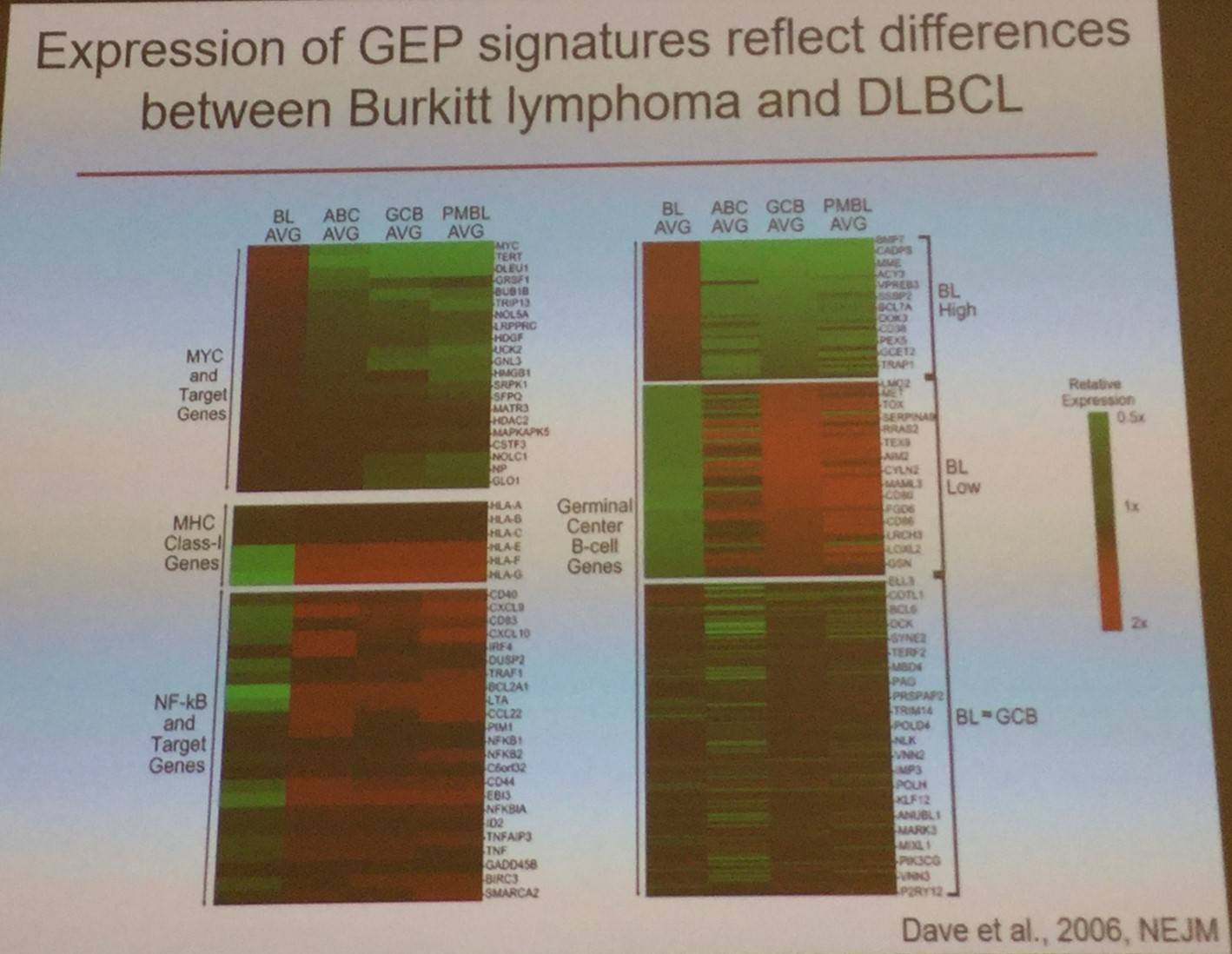
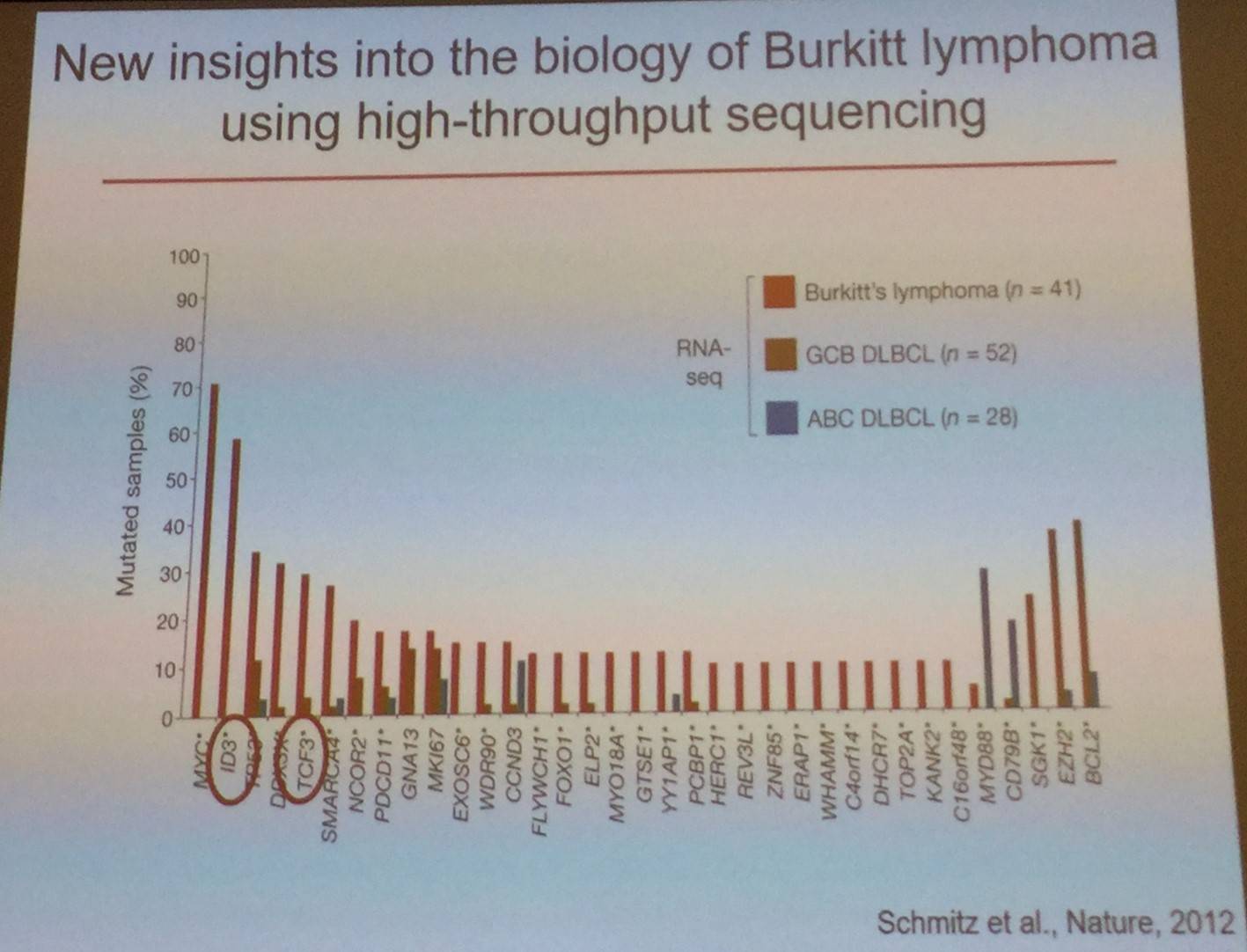
TCF3 and ID3 mutations activate the PI3K pathway, which is constitutively activated in BL. Previously, it has been reported that activation of MYC and PI3K pathway results in BL development in mice (Sander et al. Cancer Cell. 2012).
Diffuse Large B-Cell Lymphoma
It has been found that MYC expression is detected in a fairly large proportion of patients with DLBCL. Additionally, DLBCLs which contain MYC rearrangements have been reported to have worse survival after treatment with R-CHOP than those which harbor wild type MYC.
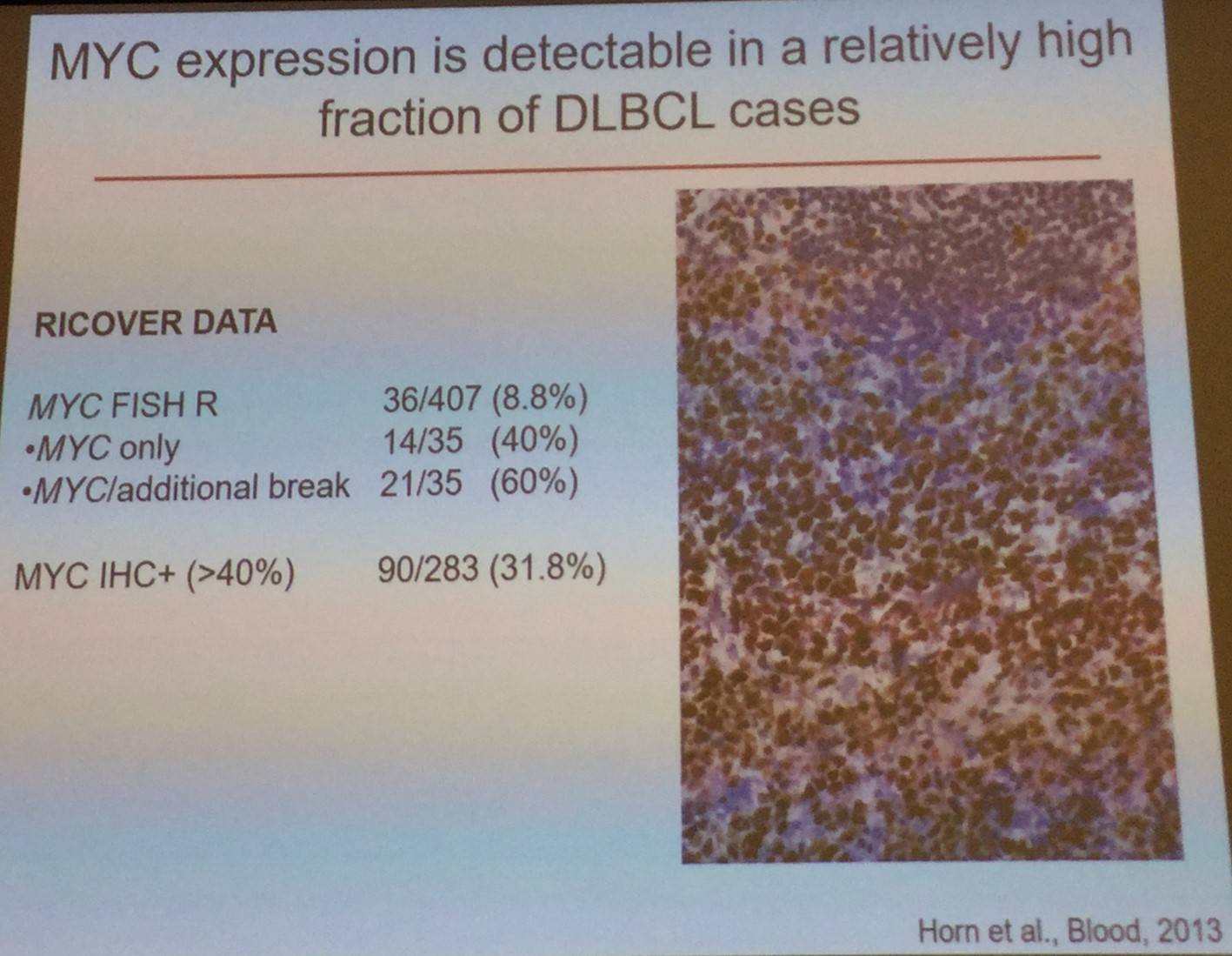
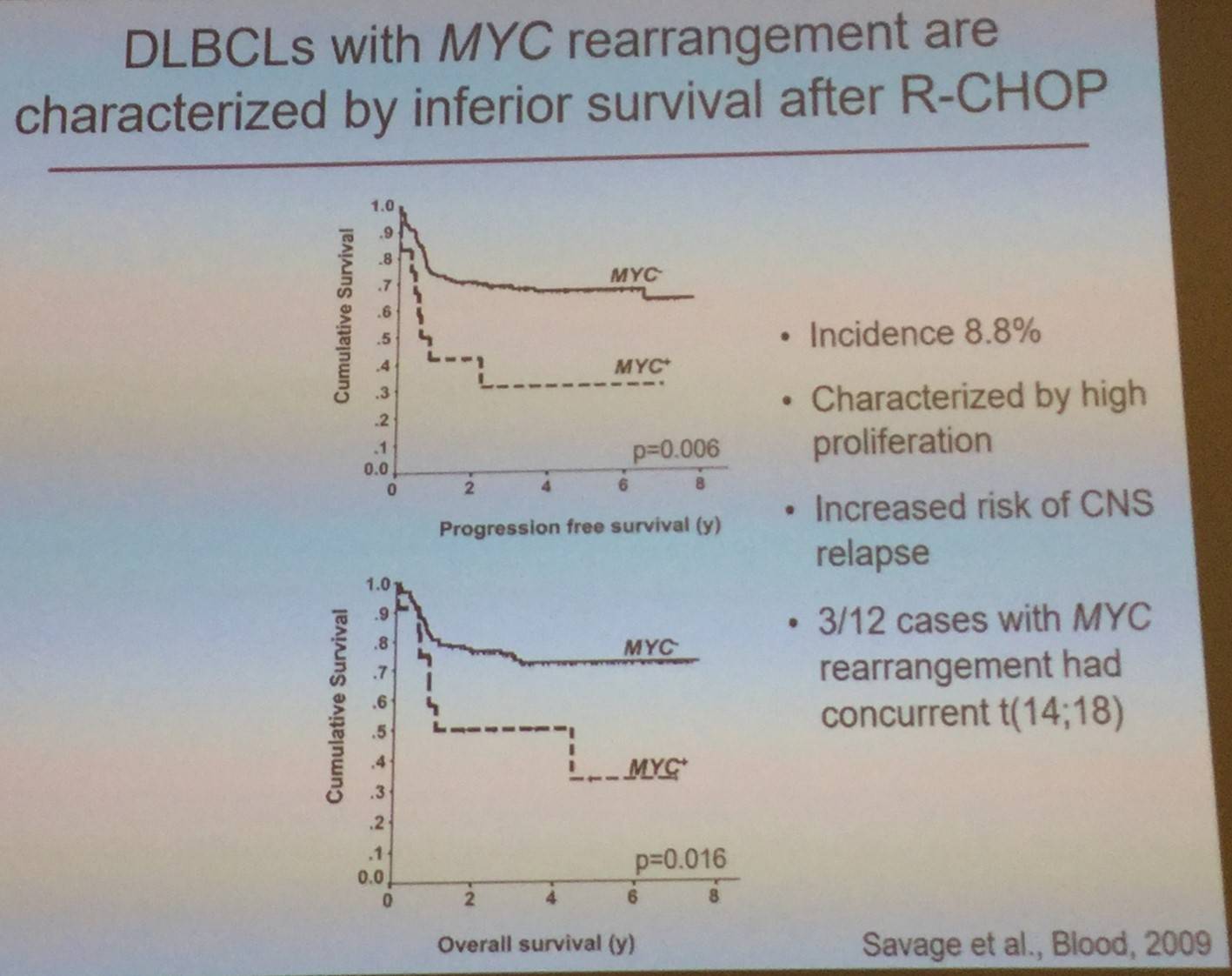
Double Hit Lymphoma
Double Hit Lymphomas (DHLs) are usually DLBCLs with MYC and BCL2 or BCL6 translocations. DHL does not currently refer to lymphomas in which MYC translocations occur with other chromosomal translocations. It is not a specific diagnosis; however, it is sometimes referred to. The term “double hit” implies that these lymphomas harbor only two genetic aberrations. DLBCL cases that express MYC and BCL2 are characterized by adverse prognosis and have an increased risk of CNS relapse.
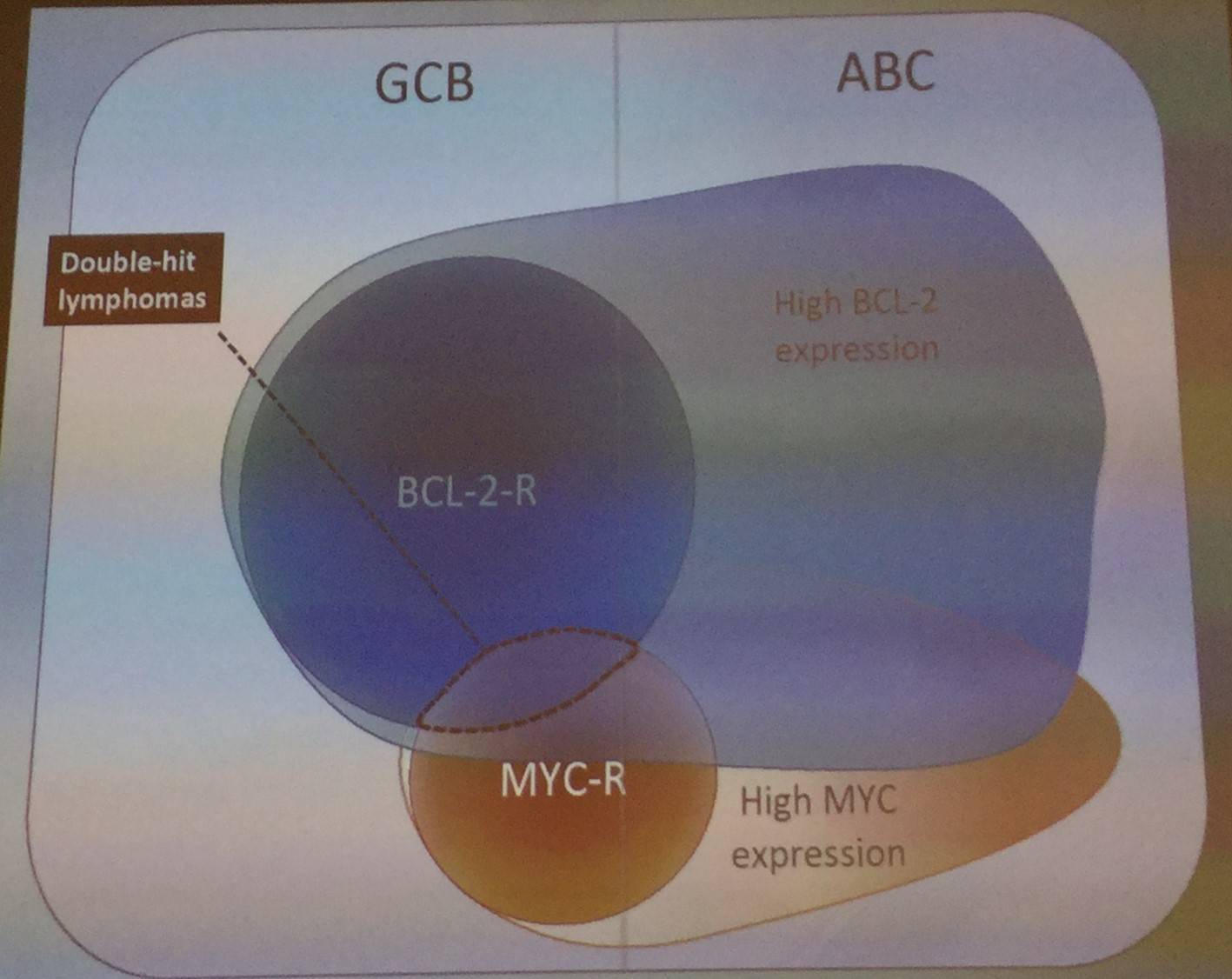
Mantle Cell Lymphoma
MCL is characterized by a poor prognosis, and BCR signaling is active in most MCLs. MALT1 links BCR signaling to the NFkB pathway and MALT1 downregulation has been shown to induce toxicity in some MCL subsets as well as significantly reduces tumor growth in vivo. Pharmacologic inhibition of MALT1 also reduces cell viability in MALT1-activated MCLs.
MALT1 regulated the gene expression network of MYC in MALT1-activated MCLs. MALT1 post-transcriptionally regulated MYC expression by preventing its proteasomal degradation.
MYC is expressed in a large proportion of primary MCLs and MYC expression is associated with a poorer OS.
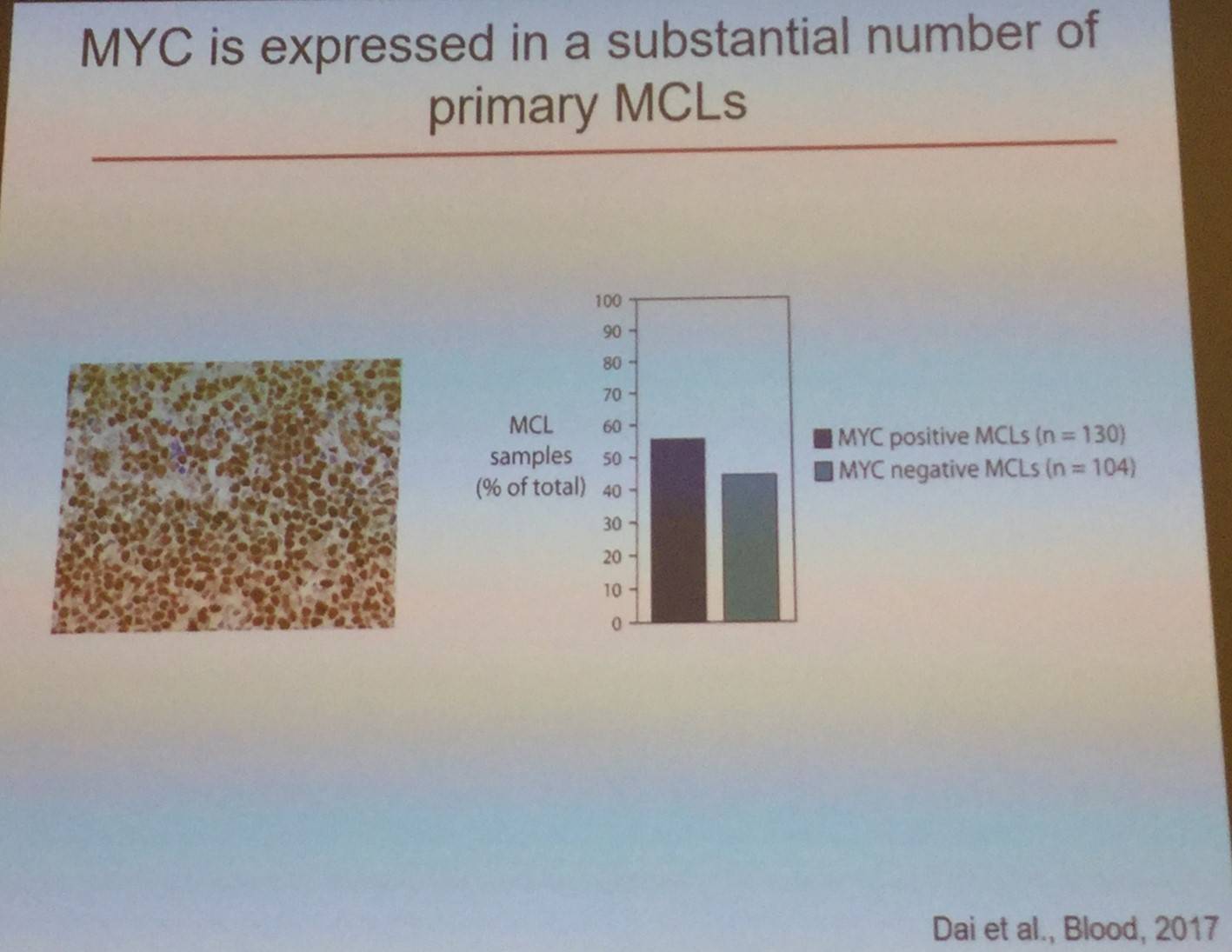
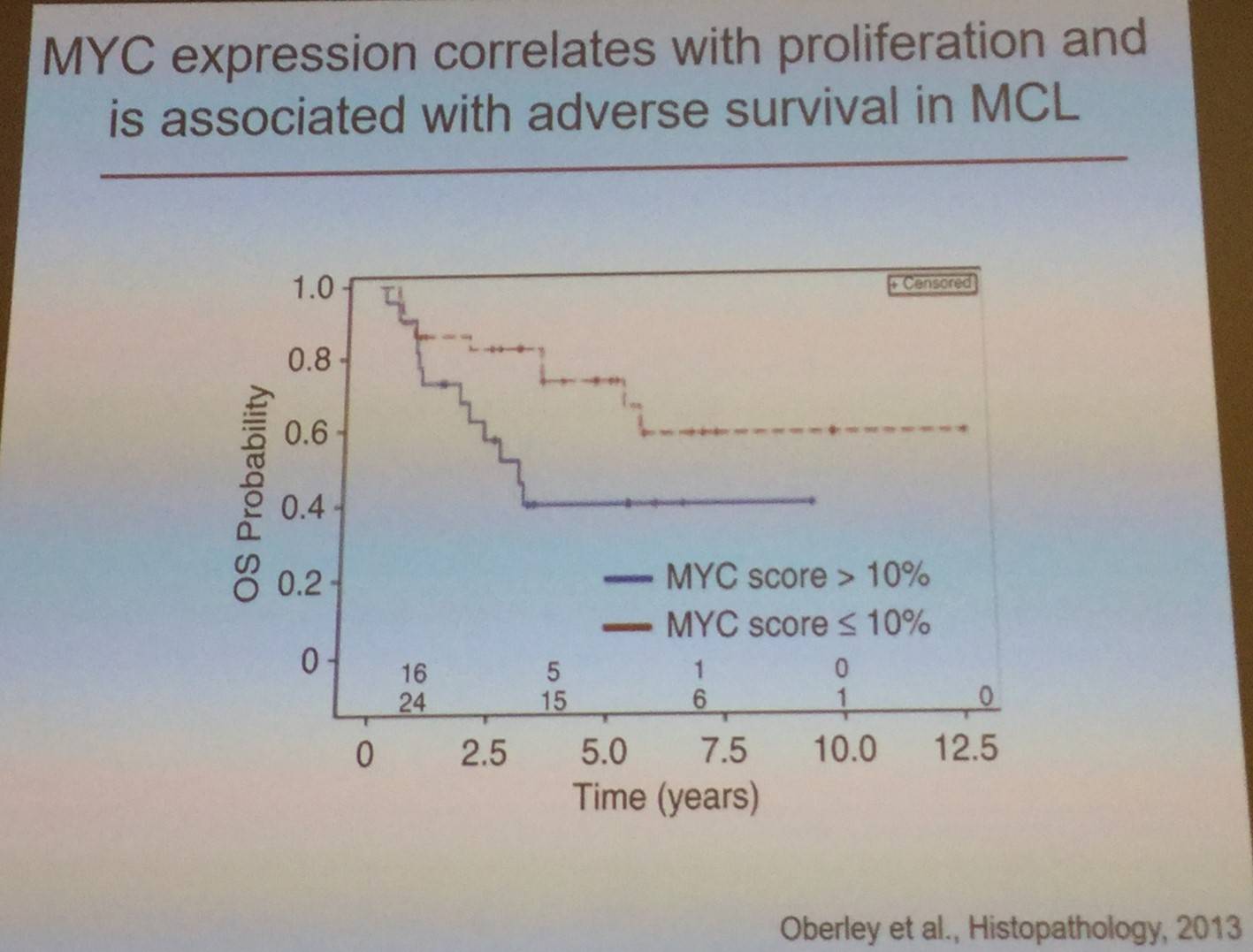
Conclusion
Prof. Lenz concluded the talk with four key points:
- MYC is an important driver in various malignant lymphoma subtypes
- MYC cooperates with other different oncogenes and signaling pathways
- BL development appears dependent on MYC and activation of the PI3K pathway
- MYC is deregulated in a substantial fraction of DLBCLs as well as MCLs
References
Your opinion matters
In your experience, when do most CRS/ICANS events occur after lisocabtagene maraleucel infusion?

